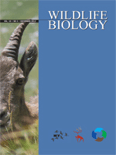
WILDLIFE BIOLOGY
Scope & Guideline
Uniting researchers for a sustainable future in wildlife biology.
Introduction
Aims and Scopes
- Ecological Dynamics and Habitat Use:
Research focuses on understanding the habitat preferences and ecological interactions of various wildlife species, including studies on habitat selection, resource availability, and the effects of environmental changes. - Human-Wildlife Interactions:
The journal addresses the complexities of interactions between human populations and wildlife, including studies on conflict mitigation, the impact of human activities on wildlife behavior, and community perceptions of wildlife. - Conservation Strategies and Management Practices:
Papers often explore effective conservation strategies, population management, and the implications of different management practices on wildlife populations, aiming to inform policy and enhance conservation efforts. - Innovative Research Methodologies:
The journal highlights the use of advanced methodologies, such as DNA metabarcoding, camera trapping, and individual-based modeling, to enhance wildlife monitoring and data collection. - Behavioral Ecology and Demographic Studies:
Research includes studies on the behavioral patterns, reproductive ecology, and population dynamics of various species, contributing to a deeper understanding of wildlife biology.
Trending and Emerging
- Urban Wildlife Ecology:
Increasing research on urban wildlife dynamics highlights the importance of understanding how wildlife adapts to urban environments and interacts with human populations, driven by rapid urbanization. - Climate Change Impacts on Wildlife:
There is a growing emphasis on studying the effects of climate change on wildlife populations, including shifts in distribution, phenology, and species interactions, reflecting an urgent need for climate-responsive conservation strategies. - Technological Innovations in Wildlife Monitoring:
The use of technology, such as drones, GPS tracking, and camera traps, is rapidly advancing in wildlife research, leading to more precise data collection and monitoring of wildlife behaviors and populations. - Community-Based Conservation Approaches:
Research focusing on community involvement in conservation efforts is gaining traction, emphasizing the role of local knowledge and stakeholder engagement in successful wildlife management. - Genetic and Genomic Studies:
There is an emerging trend towards integrating genetic and genomic approaches in wildlife studies, enhancing understanding of population dynamics, conservation genetics, and species interactions.
Declining or Waning
- Traditional Game Management Practices:
There has been a noticeable decrease in studies focusing on traditional game management practices, possibly due to a growing emphasis on more holistic and integrated approaches to wildlife management that consider ecological and social dimensions. - Single-Species Focused Studies:
Research that concentrates solely on individual species without considering broader ecological contexts or interactions has become less frequent, indicating a shift toward multi-species and ecosystem-level studies. - Historical Wildlife Trends:
Papers focusing on historical comparisons of wildlife populations and trends have diminished, as contemporary research increasingly emphasizes current ecological dynamics and immediate conservation needs. - Static Habitat Models:
The reliance on static habitat models has waned in favor of dynamic modeling approaches that account for changing environmental conditions and species responses over time. - Invasive Species Impact Studies:
While still relevant, the frequency of studies examining the impacts of invasive species on local wildlife populations has decreased, suggesting a potential shift in focus toward more pressing conservation challenges.
Similar Journals

Human-Wildlife Interactions
Empowering Research to Enhance Human-Wildlife Harmony.Human-Wildlife Interactions, published by the JACK H BERRYMAN INST, is a leading open-access journal dedicated to the critical study and understanding of the complex relationships between humans and wildlife. Launched in 2007, the journal has become a pivotal platform for researchers, practitioners, and students in the fields of ecology and conservation. It is based in the heart of ecological research at Utah State University, bringing together diverse perspectives that illuminate both the challenges and solutions associated with wildlife interactions. With an impact factor reflected in its respectable Q3 ranking in Ecology and Nature and Landscape Conservation, it demonstrates a solid contribution to these scientific domains. Researchers exploring innovative conservation strategies, wildlife management practices, and the socio-economic impacts of wildlife are encouraged to submit their studies, enhancing the journal's role in fostering dialogue and advancing knowledge in this vital area of environmental science. Accessible to a global audience, Human-Wildlife Interactions continues to promote scholarly discourse in a way that supports the sustainable coexistence of people and wildlife in our shared environments.
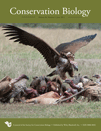
CONSERVATION BIOLOGY
Illuminating the path to ecological resilience and conservation.CONSERVATION BIOLOGY, published by Wiley, is a leading journal in the field of ecology and conservation, with a focus on disseminating high-quality research that addresses pressing environmental challenges. With a strong impact factor and categorized in the top quartile (Q1) across various relevant fields including Ecology, Evolution, Behavior and Systematics, and Nature and Landscape Conservation, the journal plays a pivotal role in advancing the scientific understanding of biodiversity and conservation practices. Since its establishment in 1987, CONSERVATION BIOLOGY has provided a vital platform for researchers, professionals, and students to share innovative findings and facilitate discussions surrounding ecological sustainability and conservation strategies. Although it is not an open-access publication, it ensures that a wide range of significant research is accessible to the global scientific community. The journal’s rigorous peer-review process and reputation for excellence make it an essential resource for anyone involved in the study of ecology and conservation.
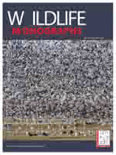
WILDLIFE MONOGRAPHS
Fostering understanding to protect our natural heritage.WILDLIFE MONOGRAPHS, published by WILEY, is a prestigious journal dedicated to advancing the understanding of ecological and biological sciences with a keen focus on wildlife conservation and management. With an ISSN of 0084-0173 and an E-ISSN of 1938-5455, this journal has established itself as a leader in its field, ranking in the Q1 quartile for both Ecology, Evolution, Behavior and Systematics and Nature and Landscape Conservation in 2023. The journal's remarkable impact is underscored by its Scopus rankings—46th out of 721 in Agricultural and Biological Sciences and 17th out of 211 in Environmental Science, highlighting the journal's influential role in shaping research discussions and policy in wildlife management. Available in print and online, WILDLIFE MONOGRAPHS publishes comprehensive studies that inform practitioners, researchers, and students alike, fostering a deeper insight into biodiversity and ecosystem dynamics. Founded in 1981, the journal continues to evolve, contributing significantly to the scientific community through rigorous peer-reviewed articles that bridge the gap between theory and practical application in wildlife management.
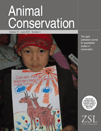
ANIMAL CONSERVATION
Preserving Nature's Legacy, One Study at a Time.Animal Conservation is a prestigious journal that serves as a vital platform for the dissemination of research dedicated to the preservation of wildlife and habitats. Published by Wiley, this journal has established a significant presence in the fields of Ecology and Nature and Landscape Conservation, holding a distinguished Q1 category ranking for both in 2023. With an impressive Scopus rank of #25 in the realm of environmental science, it caters to a global audience keen on understanding and addressing pressing conservation issues. The journal provides researchers, professionals, and students with high-quality, peer-reviewed articles that explore innovative methods and strategies in animal conservation. With its continuous publication since 1998, encompassing a comprehensive range of topics, Animal Conservation is indispensable for anyone aiming to make impactful contributions to the field of ecology and conservation biology.
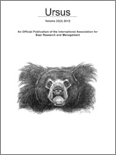
URSUS
Innovating strategies for bear conservation and ecological management.URSUS is a pivotal academic journal dedicated to the interdisciplinary study of bear biology and conservation, fostering critical research that addresses both ecological and management issues facing bear populations. Published by the International Association for Bear Research and Management (IBA), this journal has evolved since its establishment in 1998, showcasing an impressive array of studies spanning various themes related to animal science, landscape conservation, and policy management. With an impactful presence in the field, URSUS holds a Q3 quartile ranking in the categories of Animal Science and Zoology, and Management, Monitoring, Policy and Law, as well as in Nature and Landscape Conservation, reflecting its contribution to advancing knowledge and addressing pressing concerns in wildlife management. Researchers and practitioners alike will find valuable insights in its pages, as the journal is committed to promoting best practices and informed strategies for bear conservation. For its readership, URSUS serves as a vital platform for collaborative dialogue, scientific discourse, and sharing transformative research outcomes that affect wildlife conservation efforts globally.
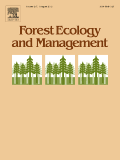
FOREST ECOLOGY AND MANAGEMENT
Fostering Sustainable Solutions for Global ForestsFOREST ECOLOGY AND MANAGEMENT is a premier peer-reviewed journal dedicated to the integral study of forest ecosystems and their management, published by Elsevier in the Netherlands. With an impactful presence in the field, this journal boasts a prestigious Q1 ranking in multiple categories, including Forestry, Management, Monitoring, Policy and Law, and Nature and Landscape Conservation as of 2023. It addresses key issues relevant to sustainable forest practices, conservation strategies, and environmental monitoring, making it a vital resource for researchers, practitioners, and policymakers alike. The journal is indexed with an impressive Scopus rank, placing it among the top tier of titles in Agricultural and Biological Sciences and Environmental Science. While it does not offer Open Access options, its rigorous review process and high visibility make it essential for those seeking to stay abreast of the latest findings and trends in forest ecology and management. Published continuously since 1976, FOREST ECOLOGY AND MANAGEMENT aims to foster interdisciplinary collaboration and advance knowledge critical to the stewardship of forest resources in an ever-changing global landscape.

Journal of Wildlife and Biodiversity
Illuminating the path to ecological understanding.Journal of Wildlife and Biodiversity, published by Arak University in Iran, is an Open Access journal that has been contributing to the fields of wildlife science and biodiversity since its inception in 2017. With an E-ISSN of 2588-3526, this journal serves as a vital platform for researchers, professionals, and students alike, dedicated to disseminating significant findings related to animal sciences, ecology, and environmental conservation. Despite its current Q4 ranking in various categories (Animal Science, Ecology, and Nature and Landscape Conservation) according to the 2023 metrics, the journal's commitment to advancing knowledge in wildlife and biodiversity remains unwavering. Although the journal's Scopus coverage has been discontinued since 2024, it continues to cater to a wide audience by promoting innovative research and fostering collaborations in the academic community, ultimately aiming to enhance understanding and conservation strategies for wildlife and their habitats.

JOURNAL OF ZOOLOGY
Pioneering insights into the dynamics of animal ecosystems.JOURNAL OF ZOOLOGY, published by Wiley, stands as a premier scholarly journal in the fields of Animal Science and Zoology, renowned for its outstanding contributions to the knowledge of animal biology and ecology. With an impressive impact factor and a strong ranking in the Q1 category for Animal Science and Zoology, as well as Q2 for Ecology, Evolution, Behavior, and Systematics, the journal rigorously engages with both foundational research and groundbreaking discoveries since its inception in 1830. Located in Hoboken, New Jersey, this journal is dedicated to fostering the academic community's understanding of zoological sciences, providing access to important research that shapes wildlife conservation efforts and ecological studies. Although the journal does not currently offer open access options, it continues to attract significant attention, as evidenced by its strong Scopus rankings in related categories. Researchers, professionals, and students will find invaluable resources in the JOURNAL OF ZOOLOGY to advance their understanding of animal life and the ecological challenges it faces today.

California Fish and Wildlife Journal
Advancing Conservation Knowledge for California's Rich EcosystemsCalifornia Fish and Wildlife Journal, published by the California Department of Fish and Wildlife, is a pivotal platform dedicated to advancing the understanding of fish and wildlife management and conservation. As an open access journal, it fosters collaboration and knowledge sharing among researchers, practitioners, and students interested in aquatic and terrestrial ecosystems. With a focus on empirical research, policy implications, and innovative conservation strategies, the journal plays a crucial role in informing both scientific communities and decision-makers alike. Researchers seeking to contribute to critical discussions on sustainability, habitat preservation, and biodiversity will find this journal an essential resource. The journal’s commitment to disseminating knowledge about California's rich natural resources enhances its stature in the field of wildlife management and conservation studies.

CALIFORNIA FISH AND GAME
Unveiling the Secrets of Wildlife and EcosystemsCalifornia Fish and Game is a prominent journal dedicated to the fields of Animal Science and Aquatic Science, published by the California Fish and Game Editor. With its roots extending back to 1979, the journal has served as a vital platform for disseminating research focused on the wildlife and aquatic ecosystems of California and beyond. Recognized within the Q4 quartile for both Animal Science and Zoology and Aquatic Science, it provides critical insights and scholarly contributions, despite its comparative rankings within the respective categories. The journal, with an ISSN of 0008-1078 and an E-ISSN of 2331-0405, offers an invaluable resource for researchers, professionals, and students alike, looking to deepen their understanding of California's rich biodiversity and ecological challenges. For those interested in open access options, further details can be reviewed through the journal's platform. By fostering a community of inquiry, California Fish and Game plays an essential role in advancing knowledge and conservation efforts in the fields of interest.